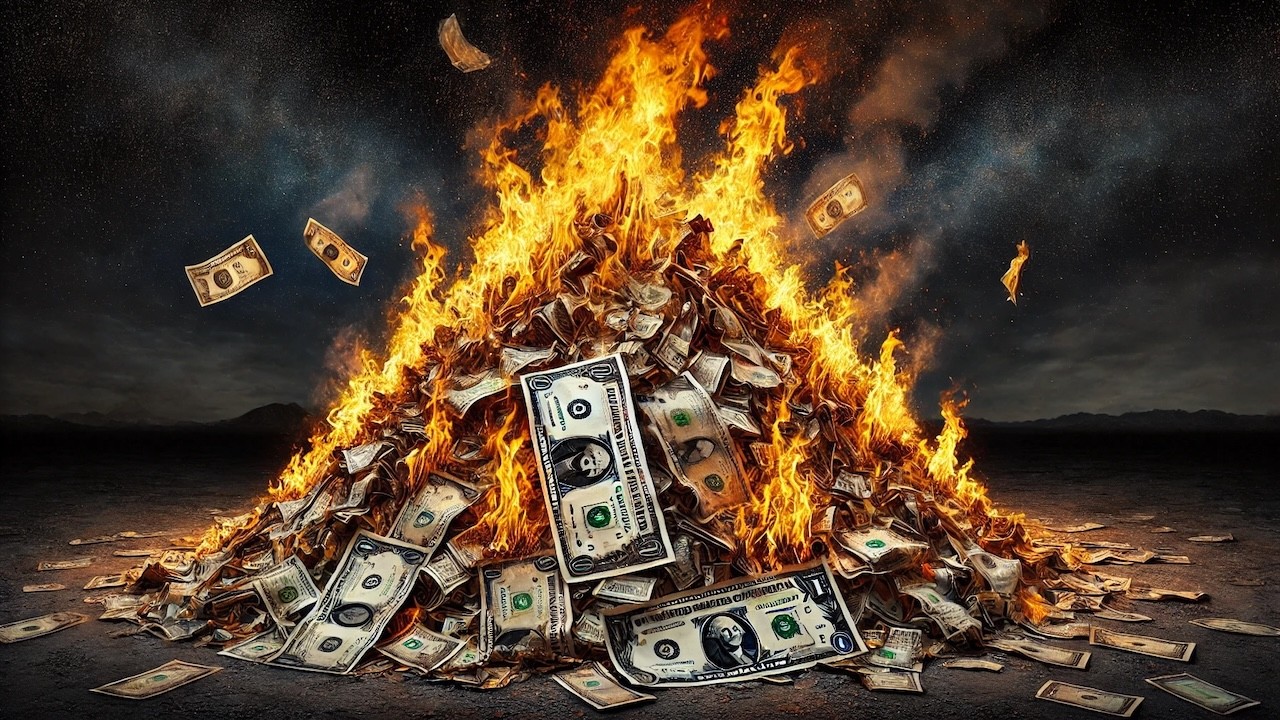(Mike Maharrey, Money Metals News Service) There’s been a lot of talk about “de-dollarization,” with many countries trying to minimize their exposure to the U.S. dollar.
But is the dollar really in trouble?
Investment guru Nick Giambruno thinks it is. In fact, he believes the dollar will ultimately collapse.
But it’s sometimes difficult to see the dollar’s decline because it is happening very slowly. In a recent article published by Doug Casey’s International Man, Giambruno highlights seven key indicators we can watch as the U.S. government falls deeper into a “perpetual debt spiral.”
1. Federal Budget Deficits: At $1.83 trillion, the Biden administration ran the third-largest deficit in history in fiscal 2024. It’s projected to get worse, with annual deficits reaching nearly $3 trillion by 2034. And as Giambruno points out, this is based on an unrealistic, rosy forecast without any wars, recessions, or other crises to raise federal spending.
2. The existing Federal Debt: The national debt eclipsed $36 trillion on Nov. 21. It took just 118 days to add another trillion to Uncle Sam’s debt load. That represents just under 123 percent of the country’s GDP. Giambruno pointed out that GDP is a flawed statistic, counting government spending as a positive contribution to economic growth. When you pull government outlays from the equation, the debt’s size relative to the productive economy is even bigger.
3. Interest on the Debt: The Federal government spent over $1 trillion on interest expense alone in fiscal 2024. Interest payments were up 28.6 percent over fiscal 2023 levels. The U.S. government paid more in interest than it did for national defense ($882 billion) or Medicare ($874 billion). The only spending category larger than interest on the debt was Social Security ($1.46 trillion.) Interest expense is expected to eclipse Social Security outlays in the near future.
4. The Federal Fund Rate: The Federal Reserve cut interest rates for the second time at the November meeting. After holding rates at zero for nearly a decade after the 2008 financial crisis, and slashing them to zero again during the pandemic, the Fed has addicted the economy to easy money. But facing surging price inflation, the Fed was forced to quickly raise rates. The problem is this debt-riddled bubble economy can’t function in a higher interest rate environment. As Giambruno pointed out, “The Fed has now pivoted back to monetary easing and rate cuts without having defeated inflation. That’s because the skyrocketing interest expense threatens the solvency of the U.S. government and forces the Fed to cut interest rates and keep them artificially low to try to control interest costs.”
5. Money Supply: Giambruno reminded us, “The Fed has only two tools in its toolbox: currency debasement and gaslighting.” He noted that the only way the Fed can control government interest costs is to inflate the money supply. The money supply contracted as the Fed raised rates to fight price inflation, but it began expanding again this summer. That is, by definition, inflation. Even with the decrease in the money supply during the inflation fight, it has still skyrocketed by 37 percent since 2020. “If your after-tax wealth has not increased by 37 percent since 2020, then you are not keeping up with the Fed’s monetary debasement. You are losing ground and on the road to serfdom.”
6. CPI: As Giambruno put it, “The CPI is misleading government propaganda intended to conceal the government’s atrocious currency debasement.” As I often remind people, the CPI significantly understates price inflation. The government revised the CPI formula in the 1990s so that it understates the actual rise in prices. Based on the formula used in the 1970s, CPI is closer to double the official numbers. Giambruno put it bluntly, “Using the CPI as a measure of price increases for 340 million people is even more preposterous than taking the average temperature across 50 states in the U.S. as a meaningful statistic to determine what clothes you should wear today.” Nevertheless, he said it’s useful to monitor CPI, “not as a meaningful metric to gauge inflation, but as a metric to analyze the Fed’s actions and gaslighting.”
7. The Price of Gold: Nobody can arbitrarily increase the supply of gold. Therefore, as the number of dollars floating around out there increases, the price of gold tends to rise. This is why gold is an inflation hedge. Giambruno asks the key question: “If the gold price is already hitting record highs, imagine what could happen now that the Fed has flipped back to monetary easing with potentially even more currency debasement than the previous rounds of stimulus.”
Watching these indicators will help you understand exactly how much trouble the dollar is really in.
Mike Maharrey is a journalist and market analyst for MoneyMetals.com with over a decade of experience in precious metals. He holds a BS in accounting from the University of Kentucky and a BA in journalism from the University of South Florida.

